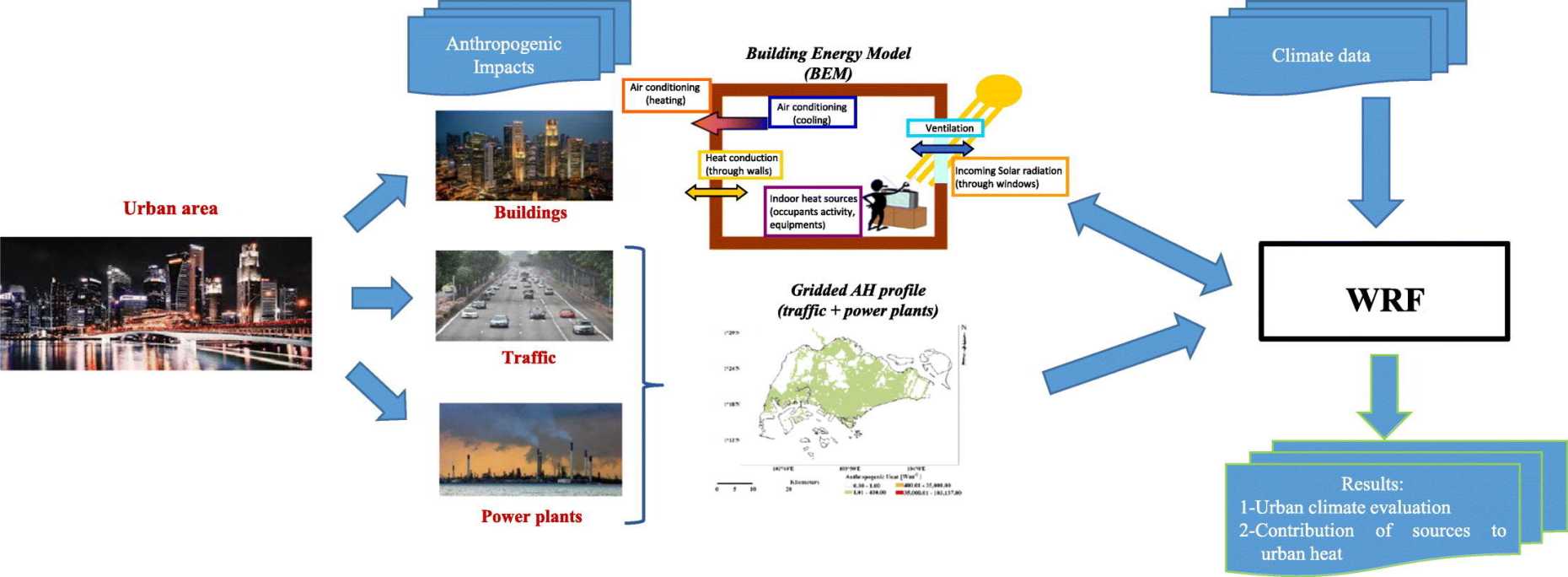Numerical analysis of the effect of human activities on urban temperature in Singapore
A study co-authored by Cooling Singapore researchers has found that buildings are the biggest contributors to urban heat.

Since the distant past, human activity has always changed and affected the surrounding environment. Anthropogenic (or 'human caused') activities, such as traffic or construction have intensified in cities, causing the Urban Heat Island (UHI) effect – 'islands' of higher temperatures in cities compared to rural areas. However, what is less known, is what activities or surfaces contribute heat to the environment, and how much.
Dr Muhammad Omer MUGHAL from Cooling Singapore and his co-researchers attempted to address this in a study, external page Numerical analysis of the impact of anthropogenic emissions on the urban environment of Singapore. They examined heat changes in the surrounding environment caused by urbanisation known as the Anthropogenic Influence (AI), and how it modified the urban climate of a tropical city. The study was conducted using a Weather Research and Forecasting (WRF) model, with inputs of AI data from buildings, traffic, and power plants for better modelling accuracy.
The findings reveal that buildings, specifically their facades, were the highest contributor to urban heat at 3.7 °C. Air-conditioning systems contributed up to 1.4 °C. Other AI activities, such as traffic and power plants, contributed to 0.9 °C and 0.4 °C increase to urban heat respectively.
Singh, V.K., Mughal, M.O., Martilli, A., Acero, J.A., Ivanchev, J. and Norford, L.K., 2021. Numerical analysis of the impact of anthropogenic emissions on the urban environment of Singapore. Science of The Total Environment, p.150534. external page https://doi.org/10.1016/j.scitotenv.2021.150534